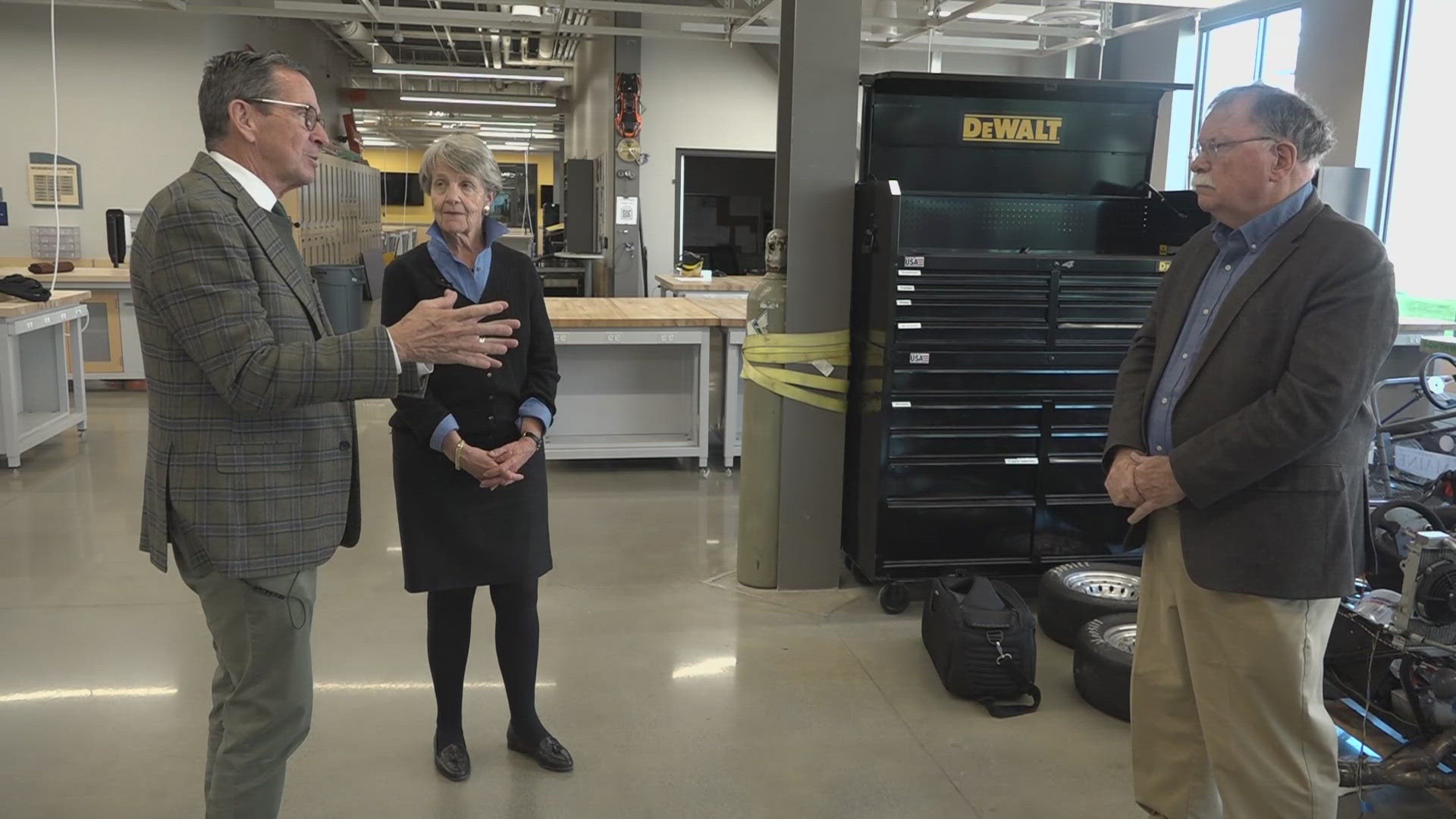ORONO, Maine — The early October sun shows the campus of the University of Maine at its best. That sun makes the leaves glow yellow and orange, bathing the old brick campus in the warm light of a Maine fall.
It’s a scene that, for old alumni, evokes rich memories of their years on campus.
But that glow also extends to leaders of the University of Maine System. For the first time in years, all seven campuses have seen an increase in enrollment. A modest increase, to be sure, but after dealing with declining numbers of students and rising costs, it is still a chance for system leaders to cheer.
"Some of that growth is triggered by new programs, some by a better way to recruit students and get them to come to us," UMS Chancellor Dannel Malloy, now in his sixth year leading the system, said.
"A lot of it is around the issue of affordability, especially for our Maine students," Malloy added.
In a time of major worries about high levels of student debt, the affordability of higher education has become a big selling point for attracting students to the university.
"Our costs, tuition, and room and board are around $22,000 a year," UMS Board Chair Trish Riley, herself a graduate of the university system, said.
Those costs can vary depending on the size and location of the campus, and the Chancellor’s Office says the $22,000 figure is the average of all seven UMS campuses.
Riley said that comparatively low costs are reduced further, in many cases, by grants and scholarships.
"More than three-quarters of students at the University of Maine, our alma mater, get some kind of financial aid. That brings cost down by half. Those costs, compared to Bates, Bowdoin, or Colby are $80,000, and the second-tier privates make us the bargain."
Out-of-state students pay a higher rate, but Malloy said the system has 7,400 out-of-state students enrolled this year—more than 25 percent of the total across the seven campuses.
University campuses also have transfer students from Maine’s community colleges, many of whom enrolled in those two-year schools because of the free tuition offered by the state. Chancellor Malloy admits some at the university were worried that the program would drain students away, but insists he was not concerned.
"I said hold on. What will happen is more students get an associate’s degree, and more will transfer into our system. And that’s what we are seeing right now is more of those students joining us directly," Malloy said.
Mallory and Riley agree there have been tough decisions to make in recent years, as the UMS has had to confront significant cost increases and look for ways to better control costs. Those have involved some cutbacks, the closure and sale of some campus buildings, and other belt-tightening efforts as campuses make changes.
"The board is keenly interested in efficiency," Riley said. "We’ve worked on balancing our budget, been very clear we need energy efficiencies and are getting them, and taking out space we don’t need that might be nice to have but not essential."
They also say university leaders recognize the importance of the system for Maine’s economic development, through research programs and training and keeping skilled graduates.
Riley, however, also underscored the other traditional role of a university: providing a broad range of educational opportunities, not just training them for a job.
"And careerism is important. We are part of the economic development of Maine, that’s where the work is. But the critical thinking skills, the opportunity to broaden your horizon in a world where we are so polarized. To learn about difference, that’s part of what a higher education should be."

